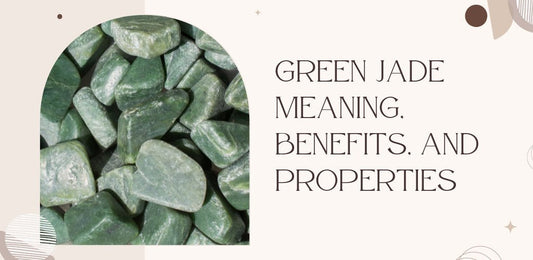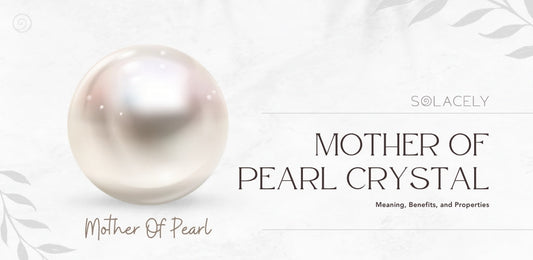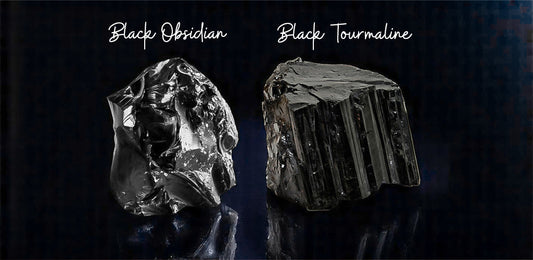Understanding Love Runes
The mystical world of runes encompasses a range of symbols with various meanings and uses. Among these are love rune symbols, which have been sought after for centuries for their supposed ability to influence and represent matters of the heart.
History of Love Runes
Love runes date back to the age of the Vikings, a period steeped in rich mythology and cultural practices. These symbols were more than mere letters; they were believed to hold powerful magic, especially regarding love. Runes could manifest different types of love, such as romantic, familial, or self-love. Love runes were not limited to mere inscriptions; they were often incorporated into rituals and ceremonies, particularly those related to weddings and marriages.
One such rune, Gebo, was historically crucial in these ceremonies in Norse culture. It represents the exchange of emotions, energy, and support in relationships, like vows or rings in modern weddings. These love runes were integral to the Norse way of life, weaving the spiritual with the every day and the divine with the mortal.
Significance of Love Runes
The significance of love runes extends beyond their historical use; they are a testament to the human desire to connect and find meaning in the universe. Each rune symbolises a specific aspect of love, offering insight and guidance. For instance, the Inguz rune, named after the Norse god Ing, symbolises growth and fruition in relationships, hinting at the potential for relationships to bloom and thrive.
Other runes like Ehwaz, represented by a horse, signify a relationship rooted in trust and mutual understanding, suggesting a partnership that shares burdens and joys. This symbol speaks to the longevity and cooperative nature of love that endures the challenges of time.
Furthermore, Wunjo, known as the rune of joy, symbolises the satisfaction, happiness, and pleasure found in love. It is indicative of reciprocated love, contentment, and the warmth of affection in relationships. Using this rune in modern practices underscores the timeless pursuit of happiness in love.
Today, individuals seeking to understand the depths of their emotions and relationships might explore these ancient symbols through divination with rune symbols or as a means of self-expression. Love runes offer a unique way to engage with the past while exploring the present and future of one's love life.
Key Love Rune Symbols
Rune symbols have been integral to ancient cultures, particularly among the Norse and Vikings. These symbols carried deep meanings and were often used in various aspects of life, including love and relationships. Below are key love rune symbols that have been historically significant and still hold enchanting connotations for those delving into their meanings today.
Gebo Rune
The Gebo rune, resembling an 'X', symbolises giving and generosity. It embodies the essence of exchange in relationships, emphasising balance and equality. Historically, Gebo was significant in betrothal and marriage ceremonies in Norse culture, representing the reciprocal exchange of love and support between partners.
In current interpretations, the Gebo rune is associated with the gift of harmonious relationships and the importance of sharing, whether emotions, energy, or resources. It's a reminder that love is a two-way street requiring mutual effort and giving.
Inguz Rune
Representing the god Ing, the Inguz rune is linked to growth, potential, and new beginnings. It is often seen as a positive omen for burgeoning relationships, indicating fertile ground for love to grow and prosper.
The Inguz rune encourages individuals to nurture their relationships and invest in their growth. It suggests that with care and attention, one's love life can flourish and yield joy and happiness, much like a well-tended garden.
Ehwaz Rune
Ehwaz, depicted as an 'M'- shaped figure, is the rune of partnership and trust. It draws its energy from the image of a horse, which was a vital companion in Norse society. This rune signifies a relationship built on a solid foundation of trust, understanding, and cooperation.
The essence of Ehwaz in love is the journey two individuals take together, sharing life's burdens and joys. It's a testament to enduring relationships that adapt and thrive through mutual respect and shared goals.
Wunjo Rune
Wunjo, known as the rune of joy, captures the spirit of happiness and pleasure, particularly in the context of love and relationships. It is indicative of reciprocated love and relationships filled with contentment and affection.
The presence of Wunjo in one's life suggests a period of harmony and satisfaction in love, where emotional connections are strong, and the warmth of love is freely shared between individuals.
Mannaz Rune
The Mannaz rune, symbolising mankind, focuses on the human connection and the social aspects of relationships. It underscores the value of friendship, understanding, and mutual respect as the bedrock of a romantic partnership.
Mannaz encourages nurturing these qualities within a relationship, suggesting that the strongest bonds in love often evolve from a foundation of deep friendship and shared values. It symbolises those who value the mental and emotional connection as much as the physical one in their romantic endeavours.
Exploring these love-run symbols provides insight into ancient wisdom that can still be applied to modern relationships. Whether seeking a deeper understanding of one's love life or simply appreciating the cultural significance of these symbols, the love runes offer a unique perspective on the forces of attraction and companionship.
Exploring Norse Love Runes
Norse culture is rich with symbols, including runes with special meanings related to love and relationships. These love rune symbols have been revered throughout the ages for their mystical significance and role in divination and magic. Here, we explore five key Norse love runes, each encapsulating a unique aspect of love and connection.
Gebo Symbolism
The Gebo rune, which resembles an 'X', is deeply associated with giving and receiving—central tenets in any loving relationship. Historically, Gebo was significant in wedding and marriage ceremonies in Norse culture, epitomising the exchange of emotions, energy, and support between partners. This symbol reminds individuals of the importance of balance and generosity in relationships. It's a symbol that resonates with the idea of love as a gift that is both offered and accepted, making it a potent emblem for those seeking to enhance their connections with others.
Inguz Symbolism
Named after the Norse god Ing, the Inguz rune stands for new beginnings and potential, particularly in the context of love. It symbolises growth and the fruitful development of a relationship, hinting at the blossoming and maturation that occurs, especially at the inception of a romantic connection. This rune can be a powerful talisman for those embarking on a new relationship or seeking to renew the passion within an existing one. It encourages nurturing affection and intimacy, aligning with the aspirations of those striving for growth in their personal lives.
Ehwaz Symbolism
Represented by an image akin to an 'M', the Ehwaz rune symbolises the horse, a creature revered in Norse lore for its strength and reliability. This symbol signifies a relationship built on trust, mutual respect, and the willingness to face life's journey together. It suggests a partnership that endures through time, bearing both burdens and joys with equal fortitude. Those seeking a stable and enduring bond may find solace and inspiration in the Ehwaz rune, as it embodies the ideal of a steadfast and cooperative relationship.
Wunjo Symbolism
Wunjo, the rune of joy, is easily identified by its appearance, akin to the letter 'P'. It symbolises the joy and contentment derived from love and signifies the pleasure and happiness of a reciprocated and harmonious relationship. This rune is a beacon for those seeking happiness and satisfaction within their romantic endeavours, encouraging the cultivation of joy and the warmth of mutual affection. Wunjo serves as a reminder to cherish and foster the pleasurable aspects of companionship for those pursuing happiness in their relationships.
Mannaz Symbolism
Mannaz, represented by two intersecting lines that form an 'M', is the rune associated with mankind and human relationships. It emphasises the significance of friendship, mutual respect, and understanding within romantic relationships, often suggesting a bond that has grown from a firm foundation of friendship. The Mannaz rune serves as a reminder of the importance of these qualities in sustaining a deep and meaningful connection with a partner. It resonates with those who value companionship and shared values, and it can be a powerful emblem for fostering enduring love built on the bedrock of mutual trust and respect.
These love rune symbols from Norse tradition offer a window into the values and ideals of ancient times, providing timeless wisdom on the myriad facets of love. They remind us that love is multifaceted, encompassing generosity, growth, trust, joy, and deep understanding.
Overview of Elder Futhark Runes
The Elder Futhark runes are an ancient alphabet and a system of symbols used for various purposes, including divination and magic. Understanding these runes is critical to grasping the roots of Northern European history and spirituality.
Elder Futhark Origins
The Elder Futhark, named for the first six runes in its sequence, is the oldest form of the runic alphabet. It was a writing system used across Scandinavia and other parts of Northern Europe from approximately 200 to 800 AD. The set comprises 24 distinct symbols, each with its name and associated meanings.
Mother Runes
Within the Elder Futhark, there are three subsets of eight runes known as 'aettir' (singular 'aett'), which translates to 'families'. Each aett starts with a significant rune, often called a 'Mother Rune'. These are Fehu, Hagalaz, and Tiwaz. They hold a special place in the runic hierarchy, with each mother rune leading its respective family with distinct thematic elements and attributes.
Fehu Rune
The Fehu rune is often associated with prosperity, wealth, and material success. It embodies the concept of mobile property, much like cattle, a measure of wealth in ancient times. Understanding the Fehu rune's implications can benefit those seeking abundance or financial success. It is the first rune of the Elder Futhark and sets the tone for the runes that follow in its aett.
Uruz Rune
Representing the aurochs, a formidable wild ox, the Uruz rune symbolises raw strength, vitality, and robust health. It can also symbolise the primal force of creation and manifestation. The Uruz rune is connected to physical and mental fortitude and is a potent symbol for those undergoing challenges that require inner strength.
Thurisaz Rune
Thurisaz is a rune with dual aspects of defence and disruption. It embodies the raw, protective power of a giant or the sharpness of a thorn. Symbolically linked to Thor's hammer, Mjöllnir, it represents a force that can both destroy and protect. This rune may signal the need to break down barriers to pave the way for new beginnings.
Each of these runes offers a glimpse into the rich tapestry of meanings that compose the Elder Futhark. Viking or Norse culture, or their application in divination, the Elder Futhark runes offer a profound connection to the past and a tool for personal growth and insight.
Evolution of Runic Alphabets
The runic alphabets are a fascinating and integral part of ancient writing systems, particularly in the context of Norse and Germanic cultures. Their evolution is a testament to the adaptability and enduring nature of symbols used to convey language and meaning.
Runic Alphabets Overview
Runic alphabets are writing systems used primarily in Northern Europe during the early Middle Ages. Originating around the 1st century AD, these alphabets have undergone significant changes throughout history, adapting to the linguistic and cultural shifts of the regions where they were used.
Elder Futhark, Anglo-Saxon Futhorc, Younger Futhark
The Elder Futhark, consisting of 24 symbols, is the most ancient and widely recognised runic alphabet. These runes were used from roughly 200-800 AD and were the precursors to later variations such as the Anglo-Saxon Futhorc and the Younger Futhark. The Elder Futhark's name is derived from its first six letters: Fehu, Uruz, Thurisaz, Ansuz, Raidho, and Kennaz.
The Anglo-Saxon Futhorc expanded the Elder Futhark by adding additional runes to accommodate changes in language and phonetics. Conversely, the Younger Futhark, which emerged in Scandinavia, reduced the number of runes to 16, streamlining the alphabet for more practical use during the Viking Age.
Runic Alphabets Development
The development of runic alphabets can be seen as a reflection of the societies that used them. As populations migrated and interacted, the runes evolved to meet the changing communication needs. Each rune contained multiple layers of meaning, representing sounds, words, and concepts. The runes were organised into aettir groups, with each of the three families headed by a Mother Rune: Fehu, Hagalaz, and Tiwaz.
The rune symbols themselves were imbued with significant meanings. For instance, "Fehu" signified wealth and abundance, while "Uruz" symbolised strength and health, and "Thurisaz" represented a protective force.
Modern Usage of Runes
Today, runes have experienced a resurgence in popular culture and are often associated with divination and magic. They appear in various forms, from jewellery and artwork to studying ancient languages and historical research. While the original utilitarian purpose of runes as a writing system has faded, the symbols have found new life in modern spiritual practices and as a means to connect with the past.
Runes continue to inspire a sense of mystery and connection to the ancient world, and their symbols, including those representing love and affection, are explored by those interested in the rich history and mythology of the Norse and Germanic peoples. For those wishing to delve deeper into the meanings behind these powerful symbols, resources on rune symbols meanings and elder futhark rune symbols can provide valuable insights. Whether used for divination with rune symbols or simply appreciated for their historical significance, runes remain a compelling link to our ancestral heritage.
Impact and Legacy of Runes
The runes have left a deep imprint on history, culture, and language, evolving from ancient writing systems to multifaceted symbols imbued with profound meanings. Their impact and legacy continue to captivate scholars and enthusiasts alike.
Historical Significance of Runes
Runes hold a significant place in the annals of history, particularly among Germanic languages. The runic alphabet, known as fuþark or futhark in Scandinavian variants and futhorc or fuþorc in Anglo-Saxon renditions, originally served to write Germanic languages before the widespread adoption of the Latin alphabet. The earliest secure runic inscriptions date back to around AD 150. The use of runes waned due to Christianization, leading to the Latin alphabet's dominance around AD 700 in central Europe and AD 1100 in northern Europe.
Spread and Adoption of Runic Alphabets
The spread and adoption of runic alphabets were extensive across Europe, with three primary variants: the Elder Futhark (c. AD 150–800), the Anglo-Saxon Futhorc (400–1100), and the Younger Futhark (800–1100). Each variant had its characters and regional adaptations, with the Younger Futhark further diversifying into long-branch, short-branch, and staveless runes. These alphabets evolved into medieval and Dalecarlian runes, showcasing the adaptability and longevity of the runic system.
Ideographic Interpretations
Beyond their use as a writing system, runes also functioned as ideographs, known as Begriffsrunen ('concept runes'), representing the concepts they are named after. This dual purpose as both phonetic symbols and ideographs lends runes a rich interpretative dimension, allowing them to carry complex meanings and messages beyond mere phonetic transcription.
Contemporary Use of Runes
In contemporary times, the fascination with runes has not waned. They are employed in various forms, from divination with rune symbols to artistic and cultural expressions. Runes have influenced modern popular culture, appearing in literature, games, and movies, often associated with magic, mystery, and ancient wisdom. Their allure is evident in the ongoing interest in rune symbols meanings and their use in personal and spiritual practices, including rune symbols for protection, rune symbols for strength, and, of course, love rune symbols.
The legacy of runes is a testament to the human desire to communicate and express complex ideas. From their origins as an alphabet to their modern representations, runes continue to be a source of intrigue and inspiration, bridging the gap between the ancient and the present, the literal and the symbolic.
You may also like:
Top 10 Manifestation Symbols and their meaning
Rune Symbol For Protection
Celtic Rune Symbols
Love Rune Symbols






